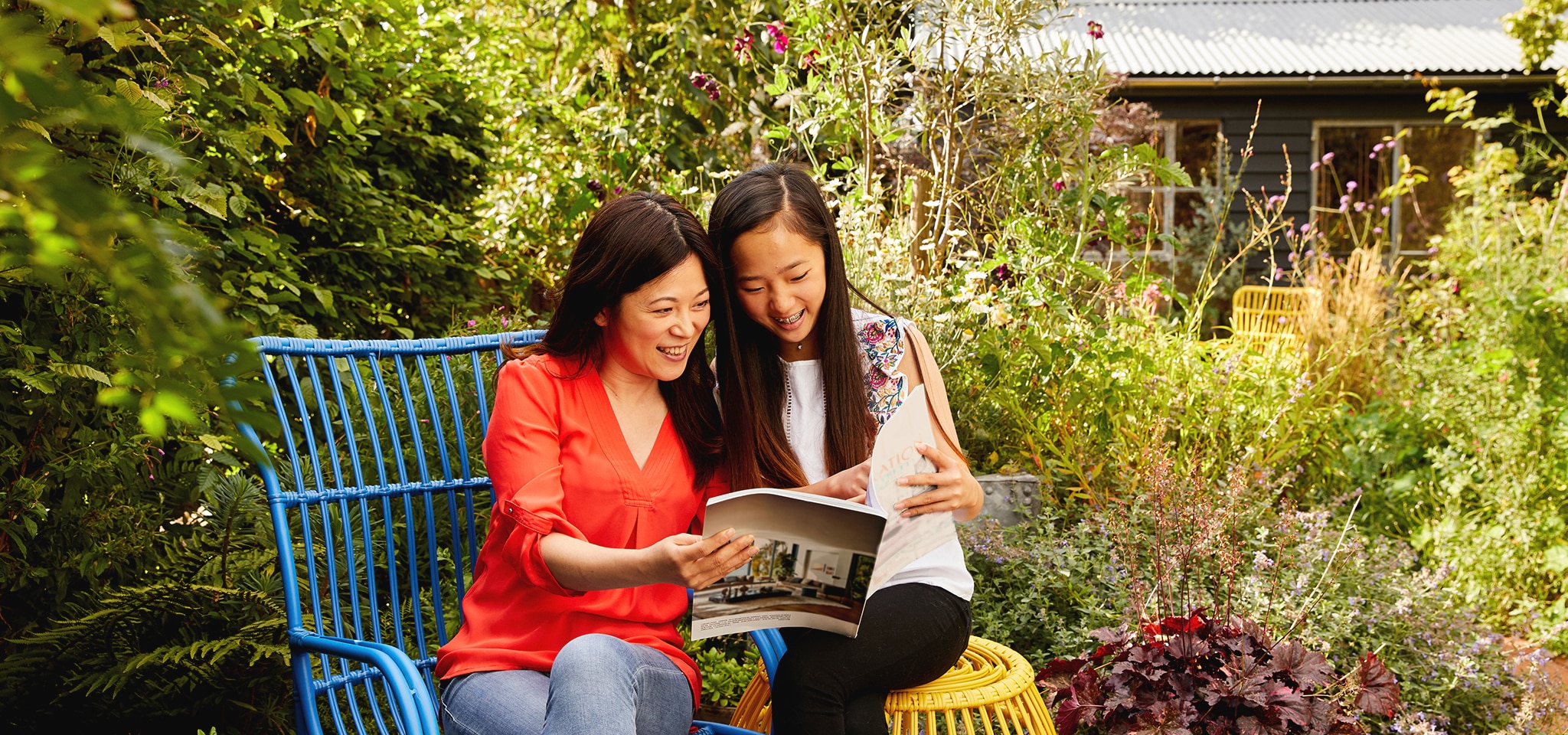The ups and downs of growing up can leave parents confused, and their daughters bewildered. Every girl’s experience of puberty is different, but this tumultuous time can be easier if you understand what's going on beneath the surface.
What is puberty?
"Contrary to cultural myths, puberty is not all about hormones,” says Dr Tara Cousineau, clinical psychologist and expert in adolescent self-esteem. “When parents understand the changes in a teenage girl’s brain, some of their moodiness, flakiness and unpredictable behaviour begins to make sense. Girls’ brains are going through an incredible transformation – one that will allow them to become caring and responsible grown-ups.
“At the same time, girls’ bodies and brains are being bombarded by reproductive hormones, and on top of this, as females they tend to have a higher sensitivity to stress. This often expresses itself in girls’ heightened need to ‘fit in’ with the crowd, their body-image concerns and their worries about what other people think of them.
Body changes during puberty – what to expect
So what should you expect as your daughter reaches adolescence? Firstly, bear in mind that not all teenage girls have a tough transition – some fly through their teen years with ease and enthusiasm.
However, there are likely to be times when you find her more argumentative – not because she consciously wants to be, but because her biology is driving her towards independence. Another sign of this is an increased need for privacy. Her bedroom may be shut for hours on end. Don’t panic – your girl needs to work out who she is away from you.
That’s what adolescence is all about – a time of separation. Although your child's need for independence is natural, it can feel upsetting, and that’s because part of your daughter is still the little girl who turns to mommy to make everything all right. But this new, developing part of her is starting to realise that’s not going to work forever, and she needs a strategy for growing and surviving alone – while still feeling connected to home.
Emerging sexuality – and ‘selfies’
Another factor, which parents sometimes try not to think about, is their daughter’s emerging sexuality. The primal urge of female puberty is for girls to make themselves sexually attractive and competitive among female peers. Although they may not be aware of this unconscious drive, it's why girls tend to become much more focused on their physical appearance during adolescence.
Suddenly, the daughter who resisted washing is hogging the bathroom, spending ages in front of her mirror and posing for ‘selfies’ to post on social media.
“Where once upon a time girls spent hours on the telephone, passing notes and dealing with drama in the school hallways, these days friendship troubles can be amplified by misreading cues from texts and social-network posts.”
Changing relationships: friends first, family second
Hormonal and brain changes at this time wire girls to become more social and communicative, and they act on this by putting their friendships above everything else.
From puberty, girls react more strongly to relationship stresses than almost anything else. Their self-esteem during their teens is linked to their ability to sustain intimate friendships. They ‘need’ to be liked and socially connected, which is why conflict in their friendships is so stressful.
Dr Cousineau notes: “Where once upon a time girls spent hours on the telephone, passing notes and dealing with drama in the school hallways, these days friendship troubles can be amplified by misreading cues from texts and social-network posts.”
Girls may misinterpret what friends are trying to say, because they can’t see their faces or hear their tone of voice.
“This matters when a teen girl’s brain and body are undergoing big changes and new neural pathways are being created,” explains Dr Cousineau. “Interpersonal cues, eye contact and empathic experiences need to be fine-tuned, too. So encourage her to have more face-to-face interactions.”
Teenager or toddler? Mood changes during puberty
There are two phases in a human’s life when massive cognitive changes take place – up to the age of three and during the teen years. It may help to think of your teenage daughter’s behaviour as if she were a toddler. She’s trying to make sense of her world while her brain is in a remodelling phase, and it can be frustrating.
Dr Cousineau believes it's important not to assume your teenage daughter can respond like an adult. She can’t. “A teenage meltdown can be very puzzling to a mom,” she says. “Trying to be rational and logical doesn’t work when your daughter is in a rage. Her brain is an emotional flood and she can’t hear you.”
When your teenager has a meltdown, consider treating her the way you used to treat your toddler during a tantrum. Depending on the scenario, showing compassion and connecting with her emotional state may be the best option.
If, however, she's being a tyrant, stand firm. Wait until she's calmed down – which could be hours later or even the next day – before attempting a rational discussion or thoughtful reflection on the situation.
Puberty can be tough, but all problems have a solution
Tell her things are going to be OK and you are there to help,” says Dr Cousineau. “Reassure her that things can work out, because they usually do.”
While situations are usually resolved over time, there are often a few bumps along the way. It helps if you can be calm and grounded. The more prepared you are for your daughter's adolescence, the better you can support her – and the easier you'll survive it yourself.
Stages of puberty: physical changes as your girl grows up
Puberty starts with a growth spurt of 5-6cm and a slight swelling of the nipples, usually when girls are around eight to 10 years of age (in boys, puberty starts slightly later, at around nine to 11). From around 11, the areola (skin around the nipples) starts to swell, and pubic hair develops. The growth spurt continues at around 7-8cm a year.
From 12, the breasts enlarge and girls may need to start wearing a bra. Budding breasts feel like a hard lump behind the nipple – this may happen in one breast before the other. (Make sure your daughter isn’t worried she has cancer. Because of the publicity about breast lumps, some girls silently worry about this.)
Pubic hair becomes coarser and underarm hair grows, and you may notice your daughter's body odour and skin changing. The growth spurt is now at its fastest, around 8cm a year.
Monthly periods can start anywhere between the ages of eight and 14, with the average age around 12. One to two years after the onset of menstruation, a girl’s growth rate slows down. Girls tend to reach their adult height at 14 or so.
At 13-14, the breasts develop into a more adult shape. Hips begin to widen and she may take on the body shape of other females in the family. She could gain up to 50% of her body weight in a few, short years. For some girls this may be troubling, while for others, it seems natural as they gain height.
This is a sensitive time for body-image concerns and self-esteem. Setting up her expectations during adolescence, based on biological changes and genetic history, is important.
Don't worry if your daughter's experience doesn't match exactly with her timeline. Every girl's experience is unique. If, however, you’re worried about any aspect of her development, talk to your doctor.




